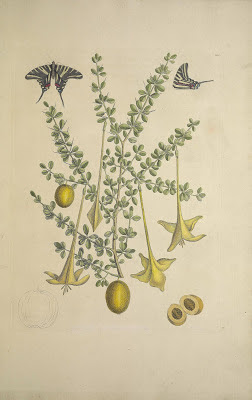Color Our Collections: The Art of Intaglio Printing
This year for Color Our Collections, we’ve produced a coloring book with illustrations from books that represent the evolution of the art of printing. This week on our blog, we’ll explore the books featured in the coloring book and the printing techniques used for the illustrations.
You can download our 2017 Color Our Collections coloring book here.
Learn more about Color Our Collections here.
The Art of Intaglio Printing
In the Intaglio family of printmaking, an image is incised into a surface, usually a metal plate. Intaglio includes such familiar processes as etching and engraving. In engraving, the image is physically carved into a plate using special tools like burins. In etching, an image is drawn onto the surface of a plate that is covered in wax. The stylus, used to draw the lines in the wax, exposes the metal of the image lines. The plate is then dipped in an acid bath. The acid etches the exposed image lines but does not affect the portions of the plate covered in wax.
Intaglio techniques were used for book illustration by the latter half of the 15th century and became the standard for illustrating books by the late 16th century. Intaglio was used predominantly until around the mid-19th century, when lithography started gaining ground.
This video from the Museum of Art, Rhode Island School of Design demonstrates the copper plate engraving process:
Catesby’s Copper Plate Etchings
In the early eighteenth century, English naturalist Mark Catesby set foot in a New World. After spending the better part of ten years, spread across two separate trips, exploring and documenting North America’s rich biodiversity, he would eventually publish his research and original artworks as the first fully illustrated book on the flora and fauna of North America.
 |
| Eastern flowering dogwood (Cornus florida) and northern mockingbird (Mimus polyglottos). Catesby, Mark. The natural history of Carolina, Florida and the Bahama Islands. v. 1, ed. 1. pl. 27. Digitized by Smithsonian Libraries. http://biodiversitylibrary.org/page/40753198. |
Published over eighteen years between 1729-1747, The Natural History of Carolina, Florida, and the Bahama Islands contains 220 plates based mostly upon Catesby’s own watercolors, which he worked up based on sketches he made in the field. The final publication was illustrated with copper plate etchings produced by Catesby himself. Catesby also hand-colored (maybe not all) the prints as well.
 |
| Canada lily (Lilium canadense), dung beetle (Canthon pilularis), and rainbow scarab beetle (Phanaeus vindex). Catesby, Mark.The Natural History of Carolina, Florida, and the Bahama Islands. v. 2, ed. 1. pl. 11. Digitized by Smithsonian Libraries. http://www.biodiversitylibrary.org/page/40680431. |
Catesby’s work was also extremely influential to the work of Carl Linnaeus, whose binomial system for naming plants and animals is still in use today. Linnaeus cited Catesby extensively in his Species Plantarum (1753) and Systema Naturae (1758). For many of Linnaeus’ species names, Catesby is his only reference, and thus Catesby’s illustrations in Natural History serve as the type for many of Linnaeus’ species.
 |
| Lily thorn (Catesbaea spinosa). Pictured with zebra swallowtail (Protographium marcellus). Catesby is the only source that Linnaeus cited when naming Catesbaea spinosa in Species Plantarum (1753). This engraving serves as the type for this name. Catesby, Mark. The Natural History of Carolina, Florida, and the Bahama Islands. v. 2, ed. 1. pl. 100. Digitized by Smithsonian Libraries. http://biodiversitylibrary.org/page/40680398. |
The first edition of Catesby’s Natural History in BHL, which was used to produce the coloring pages in this year’s coloring book, was digitized from the collections of Smithsonian Libraries. This copy is one of only a few known perfect copies of this first edition and the only one known to contain all three pieces of ephemera relating to the production of the work.
Note: This post was edited on 8 February 2017.
References
- American Printing History Association. History of Printing Timeline. https://printinghistory.org/timeline/.
- National Gallery of Art. Colorful Impressions. https://www.nga.gov/exhibitions/clrflimpr-tech.shtm.
- Nelson, E C, and David J. Elliott. The Curious Mister Catesby: A “truly Ingenious” Naturalist Explores New Worlds. 2015. Print.






Leave a Comment